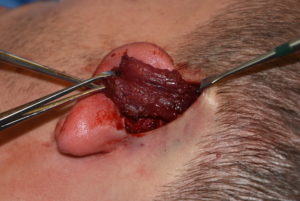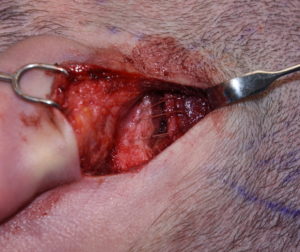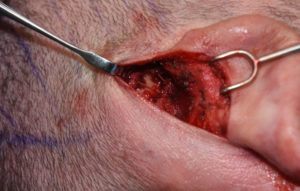



Temporal reduction by muscle removal is a remarkably effective procedure for head widening. Since there is no way to partially remove or thin the muscle from a hidden postauricular incision it is necessary to remove the entire thickness of the muscle. A tight fascial closure over the entrance at the top of the ear helps decrease the risks of visible muscle edge visibility.
Dr. Barry Eppley
Indianapolis, Indiana






